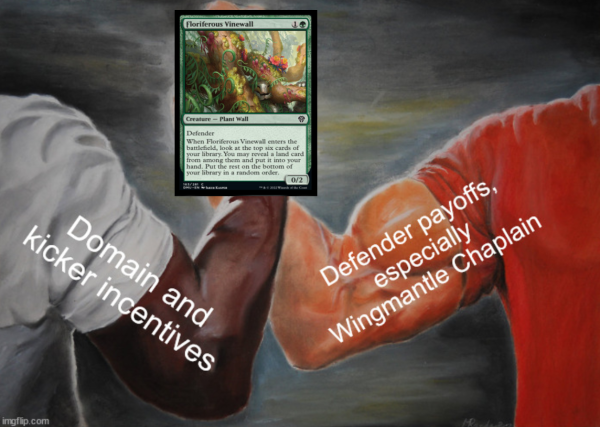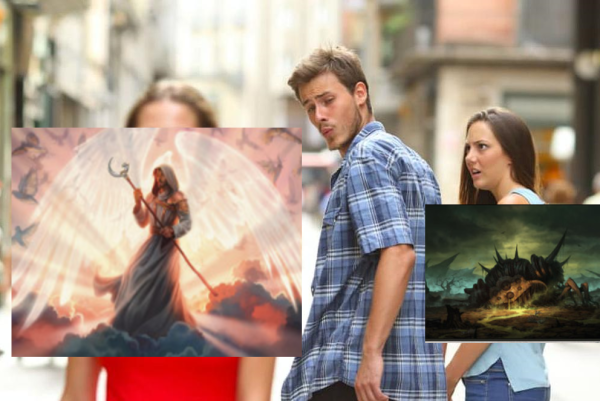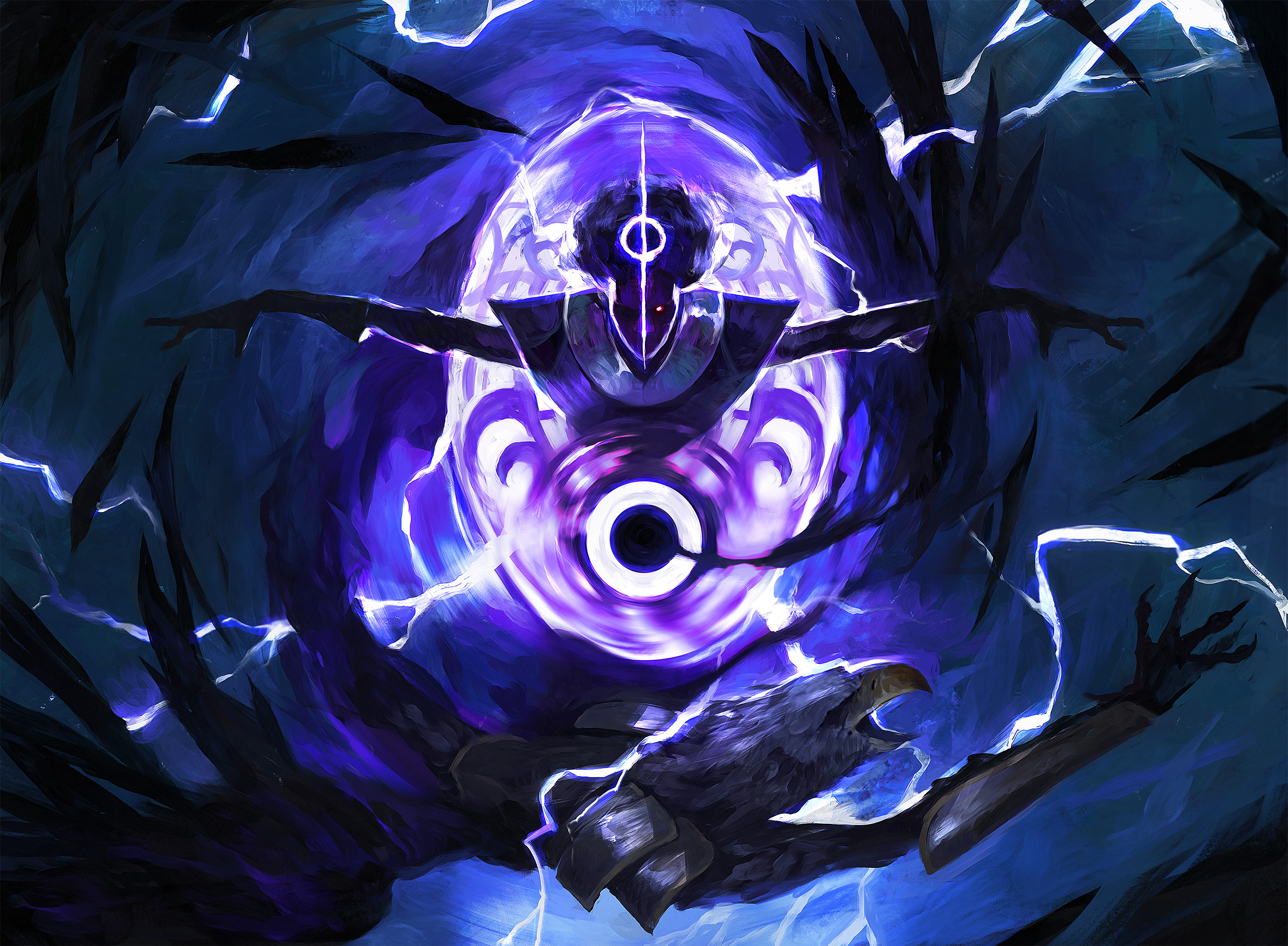Are you a Quiet Speculation member?
If not, now is a perfect time to join up! Our powerful tools, breaking-news analysis, and exclusive Discord channel will make sure you stay up to date and ahead of the curve.
Kicker and domain define the deck-building in DMU. The cycle of common nonbasic lands and the modality of kicker cards encourage splashing. In fact, players are splashing a third color in their decks at an unprecedented rate (or at least since the inception of 17lands data).
I Blame Blue
Many of the kicker spells, especially the blue-based ones, are fine unkicked. They are safe to include in our decks with only a few sources of their secondary color. Increased access to those colors is all upside. This incentive leads us to speculate on early dual-lands to facilitate a free splash. Because those lands have basic land types, they also improve the performance of the domain spells.
Low Effort Domain Payoffs
These cards are designed for Domain decks. However, if we splash non-basics for kicker spells, then these cards will over-perform in our decks. This overlapping synergy is the bedrock of the Domain decks. There are different degrees of splashing, but seeing these cards tempts us to err on the side of greed.
The Best Offense Is A Good Defender
One of the best incentives to splash is having access to bombs.
Wingmantle Chaplain is the early nominee for this set's mythic uncommon and one of the biggest bombs in the format. Similar to domain, defender synergies seep into many decks due to the cross-pollination of Floriferous Vinewall.

While Floriferous Vinewall can help set up our gameplan, Gibbering Barricade is a solid blocker, capable of a Skullport Merchant impression in the late game. These two cards are good for any slow deck, and because of this demand, we might need to move them up our pick order in the coming weeks.
Once we have the Chaplain, then Shield-Wall Sentinel becomes a priority. The Sentinel can serve as a tutor for our most powerful win condition, however, the Sentinel can also chain into more Sentinels if we have time. This sets up an even more powerful pay-off.

Additionally, pairing the Chaplain with Tolarian Geyser, Urborg Repossession, or Bortuk Bonerattle, to generate an insurmountable flock of birds. This has been the strongest endgame in the format thus far.
These multi-colored decks are amongst the strongest in the format and were the dominating force in the first days of DMU. However, all good formats evolve over time. The second stage of DMU is marked by the emergence of an underrated cycle, and one deck that seems to stand above the others.
Welcome to Stage Two
Whenever a format decides it's safe to play greedy mana and powerful spells, that's usually a sign it's about to change. A slow format is a declaration of war against aggressive decks. In DMU, they have the tools to fight back.
While the Domain decks are still strong, they can be slow, and sometimes their synergies can be underwhelming. When a deck that's already falling behind has to face an undercosted monster, it can be very punishing.
A Gurmag Angler for Every Color
These cards are all signpost commons. They tell us exactly what each color wants to do in the format. White wants to go wide, so we get a very cheap 4/4 for doing just that. Yavimaya Sojourner is a huge creature to face down on turn three or four if we're in domain. Writhing Necromass can be a strong top-end threat, powered by early trades. Molten Monstrosity... less so.

However, no matter where we get our Magic content, the discourse this week seems focused on the final member of this cycle:
Tolarian Terror is a prime reason to play cantrips, and many of them are outright strong in this format. Timely Interference has a low opportunity cost but leads to some huge blowouts while, Impulse and Joint Exploration punish opponents playing around Essence Scatter. Furthermore, for one blue mana, we can hold up a Shore Up protecting our creature after opponents pay the ward tax. If we build our deck right, this card will cost one or two mana in the late game, but slamming it on four is still a stabilizing force.
UR Spells is the Aggro Deck of the Format
The Terror is a draw to any spell-based Blue deck, but the UR deck optimizes it best. Most decks lack aggressive two-drops, but Haunting Figment and Ghitu Amplifier are dangerous both early and late. Backed by a handful of spells, these cards can pressure opponents even after they feel stable. While UB can also cast an early Tolarian Terror, the control deck doesn't pressure life totals nearly as well. As a result, opponents have time to set up profitable blocks. Against UR, it more closely resembles The Abyss.
The UR deck has become a pillar of the format. Balmor, Battlemage Captain, the suite of blue and red spells, the two-drops, and Tolarian Terror synergize well. Cards like Tolarian Geyser provide tempo and Timely Interference capitalizes on it. Once this deck pulls ahead, it's hard to stop and it can squeeze through the final points of damage with Haunting Figment, burn spells, or the trample from Balmor.
Domain decks still shine, but in the early days of the format, it felt like the best thing to do was collect all the kicker spells and let the rest sort itself out. The UR deck pressures that game plan. Domain decks need to be able to answer this streamlined strategy which is not easy. It has interaction, card advantage, and aggressive creatures.
Draft Chaff
Early data shows that this format is far from solved. It is balanced and complex. The most staggering data point is the success of Wingmantle Chaplain. Personal experience and observations crown Domain and UR spells as the best decks in the format. However, the data points to the white decks slightly outperforming these strategies.
The best quality about this format, though, is that every deck appears to be viable. Next week, we'll look at the white decks and explore the other end of the color pie. What decks have performed best for you? Let us know in the comments.




